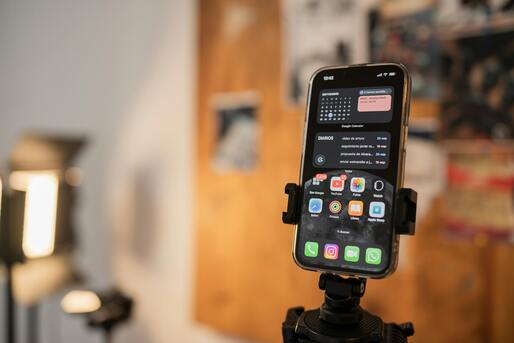
What is live-selling?
Live-selling is considered one of the modern tools for communication and interaction with the audience more effectively than other methods. It involves using live broadcasts on social media platforms to showcase products, interact with the audience in real-time, encourage them to ask questions, inquire, convert them into buyers, or engage with the brand. With the emergence of platforms like Facebook Live, Instagram Live, TikTok Live, and other live shopping platforms, companies have the opportunity to leverage this feature efficiently and professionally.
In the rapidly evolving digital marketing landscape, companies continually seek innovative ways to connect with the audience, boost sales, and increase profits. Live-selling has gained significant momentum in recent years, providing companies or organizations with a powerful tool to interact with their audience and convert customers to complete website purchases. In this insight, let's explore live-selling, its importance for companies or organizations, and how to start your first live broadcast on social media channels.
The Global live-selling Market
The live-selling concept has gained widespread popularity in recent years, especially after the COVID-19 pandemic. Most social media channels now offer a live-streaming feature for influencers and activists to interact with the audience and create unique and distinctive content. According to Online Dasher, this type of content has generated sales exceeding 20 billion in 2022. It is expected to continue growing in the coming years, making it a valuable opportunity for companies to capitalize on and derive maximum benefit.
Why is live-selling considered a distinctive feature?
Live selling allows companies and organizations to communicate with the audience in real time, creating a sense of trust and belonging. The immediate interaction fosters a genuine connection between the audience and the brand. Viewers can ask questions, seek clarification, request demonstrations, and receive "human and immediate" responses, enhancing the brand's overall credibility.
Seeing the product in a live broadcast allows viewers to ask questions and interact regarding its use or effectiveness. This direct and immediate interaction helps build trust and credibility between the seller and the buyer. Live selling is a transparent way for companies to showcase their products, address customer concerns, and demonstrate their commitment to customer satisfaction, potentially leading to increased loyalty among current or potential customers.
The interactive nature of live-selling often leads to higher conversion rates compared to traditional e-commerce methods. This is because viewers' undivided attention during the broadcast is focused on consuming content and listening to the speaker. This, in turn, facilitates seamless communication between the company and customers, as they are mentally present during the broadcast, ready to absorb advice, recommendations, and actively engage with the presented content.
In psychology, there is a phenomenon called "FOMO" (Fear of Missing Out), which some companies leverage by providing exclusive offers during live broadcasts. This encourages some viewers to make a purchase, even if they don't have a real need for the product, out of fear of missing the exclusive offer available only during the live broadcast, which may end at any moment.How to start your first live broadcast?
Select a platform that aligns with your target audience. There are various options, including Facebook Live, Instagram Live, YouTube Live, TikTok Live, platform X, dedicated live shopping platforms like Amazon Live, or even e-commerce platforms like Shopify.
Develop a content strategy that aligns with your brand and products. Plan product showcases, Q&A sessions, behind-the-scenes content, and any other content that will positively impact your audience. Strive to be unique and highlight the unique aspects of your brand.
Live broadcasts sometimes require a studio setup, but investing in suitable lighting, a stable camera, and good audio equipment significantly improves the quality of the live stream. Remember that clear and professional visuals contribute to enhancing the viewer's experience.
Encourage viewers to ask questions and inquire during the live broadcast. Interact with them professionally and kindly. Read and respond to comments, address concerns that may bother the audience, and create an atmosphere of conversation and relationship building. This interaction is a crucial element in live-selling.
After each live broadcast, analyze data and numbers. Collect comments and identify frequently asked questions. Continuously strive to improve and enhance the quality of your work. Keep up with changes around you and constantly adjust and update your strategy to meet customers' expectations and desires.
In conclusion, live-selling is not just a recreational or novelty activity for breaking the routine or creating content in organizations. It is a powerful strategy that can yield good returns if handled professionally to gain more audience, enhance brand credibility, and increase customer loyalty and satisfaction.